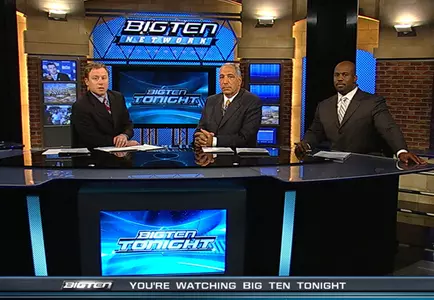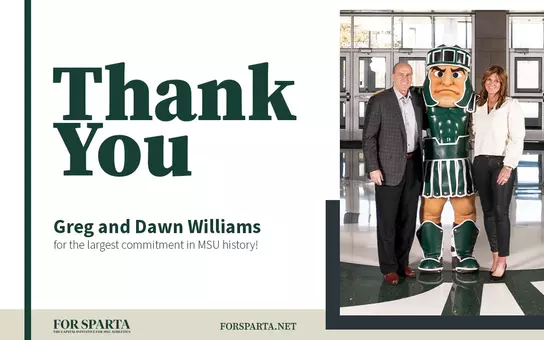
Big Ten Network: Myth vs. Fact
11/8/2007 12:00:00 AM | General
Nov. 8, 2007
Big Ten Network: Myth vs. Fact
Big Ten Network: Myth vs. Fact
The following fact sheet was compiled by the Big Ten Network.
MYTH: Most people won't watch the Big Ten Network.
FACT: People with the Big Ten Network are watching it. Already Big Ten Network games have ranked among the 12 most popular programs on advertising-supported cable (and satellite) television within respective cities nine times, while 12 games rank in the top 50. According to Nielsen Media Research, well over 3,000 programs were televised on expanded basic cable channels last month. While the games have proven popular, so has the other programming on the network. For the month of September, according to Nielsen, Big Ten Network's average coverage area rating was 24 percent higher in Columbus and 15 percent higher in Cleveland than the average coverage area cable rating. These ratings represent the entire month, 24/7.
MYTH: Comcast and other large cable operators are trying to "protect" consumers by refusing to put Big Ten Network on expanded basic.
FACT: Comcast and Time Warner want to put Big Ten Network on a sports tier because of the significant additional revenue a sports tier would generate for them. Comcast, for example, would receive an estimated $280 per year from each customer who is not already a digital subscriber and an estimated $138 per year if they already pay for digital service, which is required to get a sports tier. DIRECTV, DISH Network, Insight, WOW and RCN, and about 150 other cable companies already added the network to their expanded basic level of service without a simultaneous price increase to consumers.
MYTH: The Big Ten Network wants to charge Comcast and Time Warner Cable $1.10 per subscriber per month.
FACT: Neither Comcast nor Time Warner have ever been presented with a proposal to pay that rate; Big Ten Network's latest proposals to them suggest a rate under $1 for subscribers inside the eight states and about a dime everywhere else in the country, for a proposed average cost nationally of about 30 cents. Additionally, Big Ten Network is offering cable companies three revenue streams to offset their costs: local advertising time, HD packages and video-on-demand. We have been flexible enough with regard to price to be able to reach agreement with 150 other cable operators.
MYTH: Big Ten Network is the second most expensive network behind ESPN.
FACT: The license fee the Big Ten is charging cable operators ranks 30th out of 39 regional sports networks tracked by Kagan Research, a well-respected industry source. Regional sports networks such as Comcast SportsNet Northwest, Philadelphia, Mid-Atlantic and Chicago cost double the Big Ten Network's fees in the region. Outside the Big Ten's eight-state footprint, Kagan ranks the network's cost of about a dime at 84th out of 159 national networks. Kagan estimates that the average monthly license fee per subscriber for larger operators such as Comcast, Time Warner and Charter - which have subscribers both inside and outside the eight states - is 27 cents.
MYTH: Big Ten Network is demanding cable companies charge consumers to receive the network.
FACT: Cable companies determine the cost of your bill, not programmers like the Big Ten Network. While cable companies like to blame programming costs, those costs account for less than one-third the revenue they receive from subscribers. Comcast customers in Chicago, for example, are experiencing increases of between $30 and $138 per year, depending on their package, despite not receiving any new channels and in fact having channels removed.
MYTH: The Big Ten Network is taking away games that used to be free.
FACT: Last year, eight Big Ten football games and 85 men's basketball games were not televised at all. During the last two years, 57 football games that viewers would have seen through syndication packages on ESPN-Plus appeared on ESPNU and ESPN360, which are not widely available. The trend away from local syndication would have continued with or without the Big Ten Network. With the Big Ten Network, every home Big Ten football and men's basketball game will now be produced for a national audience. We believe that fans within the Big Ten's eight-state footprint should be able to see these games at no additional charge on their existing expanded basic cable package.
MYTH: The Big Ten Network has leftover games.
FACT: Big Ten Network has the games Big Ten fans want to see, and more conference games than any other network. Remember Michigan-Appalachian State? Penn State at Illinois? Northwestern's overtime wins against Michigan State and Minnesota? The Michigan-Appalachian State game on Sept. 1 drew 11.3 percent of the viewers in Detroit who had access to the network. A huge 36.6 percent of Columbus residents with the network watched the Ohio State-Akron game on Sept.8 - and that was the third highest-rated program in September of the more than 3,000 programs on basic cable. During men's basketball season, the Big Ten Network will televise 140 games, including 64 of the 99 in-conference match-ups and up to 23 games per university. There will be dozens of great basketball games on the Big Ten Network this season, and is the destination for more Big Ten coverage than any other network.
MYTH: If I don't like sports I shouldn't have to pay for the network.
FACT: Everyone pays for channels they don't watch. First, it is the cable operators' decision whether to pass any fees they pay to the Big Ten Network on to their customers. Second, every month people pay their cable provider for channels they don't watch. Elderly citizens pay for MTV and VH1. Single people pay for the Disney Channel and ABC Family. Men pay for Lifetime and Oxygen. Women pay for Spike TV. No channel on cable appeals to ""most people."" However, in 2006, more than half of the top 100 highest-rated programs on cable television were sporting events. Sports programming generates audiences like no other single programming genre. Past history shows that Big Ten football and basketball games are among the highest rated programs on cable TV. For example, the highest-rated cable programs are typically viewed by 5% percent of the population, and the average program is viewed by significantly less than 1%. The Big Ten Network telecast of the Michigan-Appalachian State game on September 1, however, was viewed by 11.3% of people in Detroit who receive the Big Ten Network.




